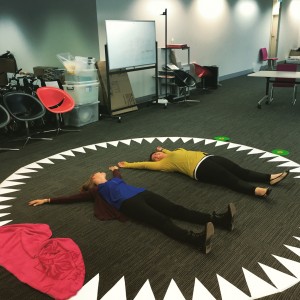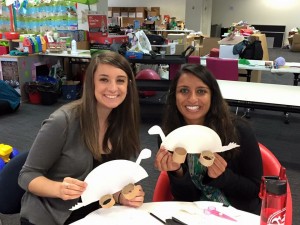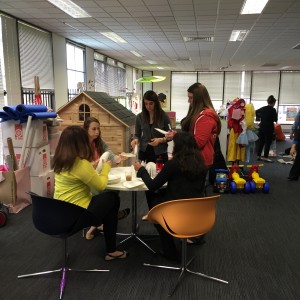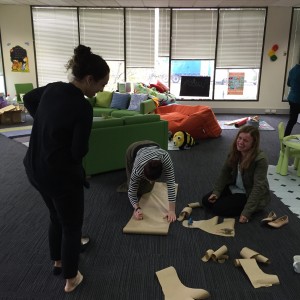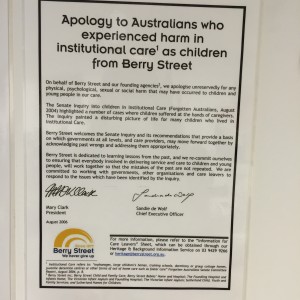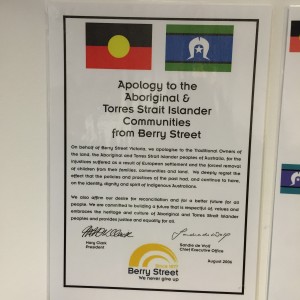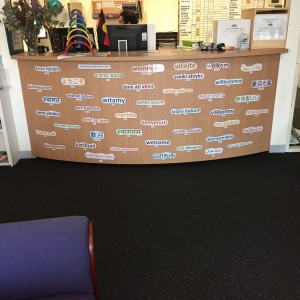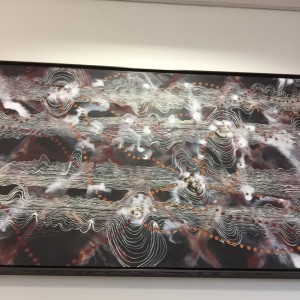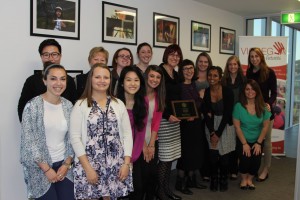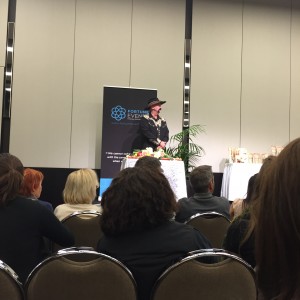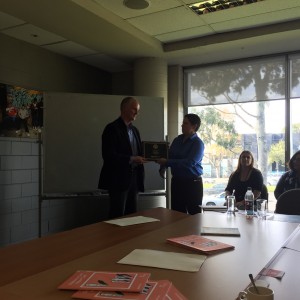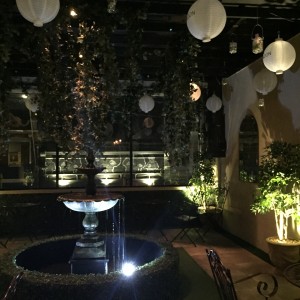Australia was not necessarily at the top of my list of countries to visit, but now that I have carried out the wise decision to take advantage of an opportunity to learn there for a month, I have to encourage everyone to move it to the top of theirs. Australia is so unlike the stereotypes, depending when and where you go in the country. To be fair, we only had a month and when we prioritized, the true outback got left out. Australia is a LARGE country despite what skewed modern world maps would have you think. Melbourne was like a mini-NYC on the Southern/bay area of the country and is very diverse and cultural. We were not quite prepared for just how diverse the people there are. The public transit system is impressive and the architecture throughout the city is something to marvel at for the sheer variety of styles splattered throughout downtown. At first, we thought the suburb we were staying in was a bit rough, because there was graffiti everywhere, but that was before we realized street art COVERS the city – and it is spectacular!


This trip will go down in my personal history as one of the best things to ever happen and our weekend on the Great Ocean Road was unforgettable!
White Australia Has a Black History
I stole the title of this section from a sticker I saw on a restaurant in Newtown in Sydney. One of the most profound things I will take away from Australia 2015 is the deadliness of its aboriginal population. The term “deadly” is a positive way aboriginal people refer to themselves. Aboriginal and Torres Strait Islander people are the oldest surviving civilizations in the world (40,000+ years). After the U.S. gained independence, Britain set its colonial sights on “unsettled” Australia. Issue was hundreds of aboriginal nations covered the whole of Australia and they had unique eons-old customs, languages, and agricultural practices. The U.K. was imprisoning high levels of citizens for even the pettiest of crimes and they needed somewhere to dump them, so they sent them to Australia. They could barely grow food, ruined the aboriginal way of life, and introduced more than one invasive species (cough cough, rabbits) that wreaked havoc. The Australian government actively removed aboriginal children from their homes during the 1900s, often when fathers were off at war or at work. The children were put in camps and converted to Christianity. The strategy was to mix them into white society and to literally breed aboriginal people out of existence. Much in line with the immigration policies of the time, the goal was pretty stated as “White Australia”.
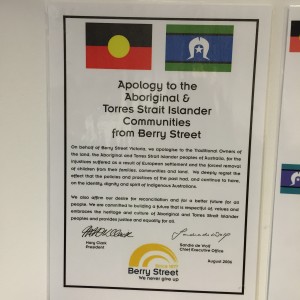
You can see here that Berry Street went so far as to display apologies to the Aboriginal and Torres Strait Islander people, for any participation of theirs in the Stolen Generations.

As you can see here, Australia’s historic treatment of immigrant and minority groups is strikingly similar to the U.S. (picture taken at the Melbourne Immigration Museum)
I was lucky to visit the Melbourne Immigration Museum. I used to want to be an immigration attorney and I am passionate about immigration issues within the U.S. As I explored the whole of Australian immigration history in the museum, I realized how many parallels there were with U.S. history and how many of the policies favored some categories while discriminating against others at politically opportune times. I think a lot of Australian immigration and native treatment issues parallel with the American experience, and I can see parallels between Australian aboriginal people and immigrants and Native Americans, African Americans, and immigrants. These populations – historically subjected to severe intergenerational trauma and institutional disadvantage – have symptoms of oppression in common >> more poverty, more drugs, more gambling, less education >> they are overrepresented in these areas because they’ve been underrepresented for too long by their governments. Australia is an example of a country that is doing things a bit differently from the United States and succeeding to an extent in increasing the standard of living for Australians via social programs and policies, such as universal healthcare. Programs are becoming trauma-informed, culturally competent, progressive, and noteworthy. The research done on new programs is creating an evidence base for the changes social workers for years have argued are necessary to empower human beings that are often simple, cost effective, and produce results when executed properly.

A photo of the book published by Lighthouse Foundation/Institute – they are primarily concerned with helping homeless youth through trauma-informed care.
aUStralia
It is interesting to compare the U.S. and Australia, because Australia is so similar to the U.S. in many ways. In fact, at times, we noted how aside from the accents, we wouldn’t know we weren’t in a U.S. city. On the other hand, poverty and homelessness seem to be less visible here than in major American cities. We were told that the minimum wage is much higher than the U.S. and happens to increase with age. This is compounded by the fact that the welfare benefits are more robust and single parents receive additional payments. In addition, as became very clear during our visit the Royal Children’s Hospital, the country guarantees public health insurance to each citizen – no documented person was on the streets on account of medical bankruptcy. One group member wants to attend medical school and run free clinics and her questions surrounding coverage issues and free clinics were virtually obsolete under the Australian system. How insane is it that their norm is “any sick Australian child can come into this hospital and receive treatment, without the fear of crushing charges”? Can you imagine a U.S. system in which free clinics aren’t necessary?
The Australian Way: Governance
I slowly came to a major realization that is important in understanding what we saw in Australia and how their agencies are able to thrive. I was beyond impressed with the nine agencies we visited for the program and the 4 additional agencies I visited with for personal research. They were generous with sharing their knowledge – each had a solid philosophy, commitment to values, evidence base, commitment to research, and a truthful and holistic way about them. I was surprised that none of the 9 agencies the program visited –and only 1 I visited on my own – was run by the government. Jeff Young of the Bouverie Centre ended up confirming that the Australian government has largely stepped away from service provision, therefore it now sets policy and funds community organizations to design, implement, and test programs. This seemed to be a significant positive, due to the fact that I witnessed progressive and innovative programming that appeared to be catalycized by a lack of red tape and bureaucratic attitudes. Organizations were young, diverse, and dynamic – which made them adaptable. Their physical spaces were mindfully created or repurposed and they were resourceful – very unlike the sterile cubicle environment you almost always encounter at a government-run agency. The downside to this model is, of course, now much of the legal and other burdens that used to be shared or held by the government are now shifted to the service providers.
My Australian Motivation
Why am I so concerned with funding and government structuring? I am heading into my final year of my master’s programs in social work and public administration. I have spent the past 3 years working in child – with an internship with the Children’s Defense Fund, followed by a caseworker position with Franklin County Child Support Enforcement Agency (FCCSEA), which led to both a policy internship and social program developer grant position. A good deal of my master’s research has centered around drug policy and social justice. My research topic for the John Glenn School will be comparing drug policy’s effect on the welfare of children in The United States, Australia, and Portugal.
Agencies Visited For Program:
- Victorian Aboriginal Child Care Agency (VACCA)
- The Royal Children’s Hospital
- The Young and Well CRC
- ReachOut.com
- Berry Street
- Lighthouse Foundation/Institute
- The Bouverie Centre
- Victorian Cooperative on Children’s Services for Ethnic Groups (VICSEG)
- Anglicare
Agencies Visited for Personal Research:
- Victorian Alcohol and Drug Association (VAADA)
- Turning Point Alcohol & Drug Centre
- The Australian Drug Foundation (ADF)
- Australia Child Support Agency (Sydney)
Empowering Clients as Experts On Themselves
The Bouverie Centre specializes in “single session” or “no bullshit therapy”, in which a long assessment is abandoned in favor of infusing the first session with as much discussion of the crucial issue at hand as possible. This is based on the research that shows 75% of clients report being happy with just one session of therapy and many don’t show for more than that one. Knowing this information, they decide to get realistic and create a model that fits the client, rather than the administrator’s perceptions. A couple of more micro-tracked master’s students commented they are taught 14-session therapies and that they were surprised to learn of this approach. This example goes to show that there are very different ways to deliver the same service and often, there are tradeoffs associated with all of them. What I found unique about the Bouverie Centre’s approach was that it really tapped into what the clients report and the statistics show, rather than a program conventional thinking would have designed. The fantastic track records of these organizations prove they are doing a lot right. I am a huge proponent of comfortable, bright, open, safe workspaces for social workers and others working in difficult positions with difficult issues and the Bouverie Centre really impressed me in that respect. Their office was laid out in a circle and I noticed the director’s office was no bigger than the rest. In addition, their two-way mirrored rooms were fascinating – not because of being two-way (of course I’ve seen those before!), but in how they are used. I love that Bouverie Centre actually has the family watch the clinicians debrief about what they saw during the family’s session. This seems a genius way to increase client trust and access to information – not many programs provide that level of empowerment for clients.

Here you can see the Bouverie Centre cares about being culturally inclusive – their front desk was full of multilingual greetings and had a sign that said “Don’t see your language here? Let us know!”
Better Than Souvenirs
I did not end the trip with much in the way of souvenirs due to being a broke student and the strategy with which I failed to pack my luggage, but I left Australia with experiences and insights that are priceless. There is a significant amount I have taken home from Australia that I can apply to my professional realm. I was already a proponent of universal healthcare, increased use of social workers, a more robust welfare system, and quality public transportation. Australia has solidified my commitment to bringing these qualities to the United States. We often hear that such policies cannot work in the United States – we are too big, we are too diverse. Australia rivals the United States in its diversity and issues with immigration, the economy, etc. and they are finding unique ways to function within the context of their aboriginal and immigration issues. Australian agencies we visited were inspiring for how culturally sensitive and trauma informed their policies and programs are. The Australian government officially apologized for its treatment of aboriginal populations, but has done little to aide in reparations for the splitting up of families and intergenerational trauma caused. One thing I noticed is that much of Australia, such as every single one of the agencies we visited and numerous businesses, acknowledged the traditional aboriginal owners of their land. We also saw signs such as “White Australia has a black history” and “Real Australians Say Welcome”, which demonstrate a community movement to confront issues of maltreatment and alienation of aboriginal and non-white populations in general. Berry Street even included an apology for any role they played in the stolen generations. Almost every agency we visited had aboriginal staff, aboriginal-specific programming, operating within cultural and trauma-informed frameworks. The United States is doing some of this as well, but we need to be more consistent. I know that the agency I work for has not always had the best of community relations reputation and is working hard to better understand the low-income, immigrant, and historically disadvantaged populations we work with so we can create and implement smarter, humane, evidence-based practices. I will also take back the lesson to keep in mind that convention or “common sense” practices are not always best and that it is important to tap into intuitive programming with strong research support – doing so can be revolutionary.
I MISS YOU ALREADY, MY DEAR AUSTRALIA!
I WILL be back.

